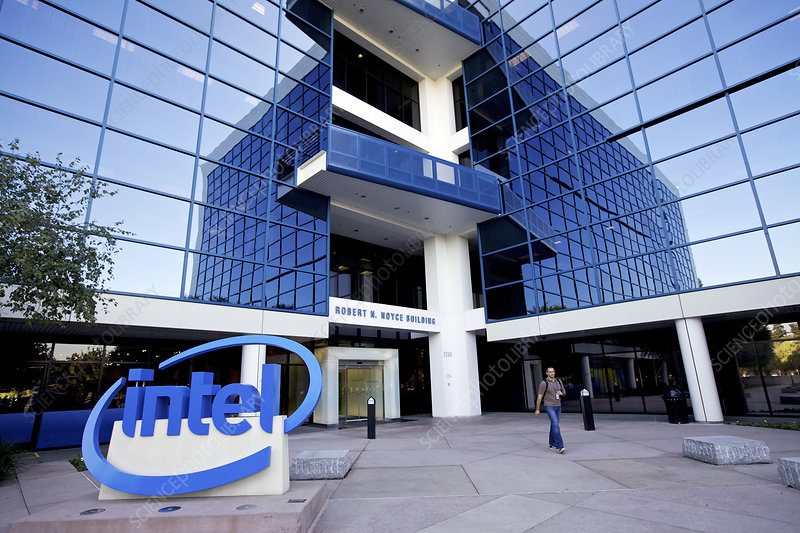AppLovin posted record Q2 2025 results, with 77% revenue growth, higher margins, and a strategic shift toward core adtech platforms.

Trump administration takes historic $8.9 billion stake in Intel, acquiring 10% ownership amid bipartisan criticism and concerns over government intervention in private enterprise.

In an unprecedented move that has sent shockwaves through both political and business circles, the Trump administration announced Friday that the United States government will make an $8.9 billion investment in Intel common stock, acquiring approximately 10% stake in the struggling chipmaker. This landmark decision represents one of the most significant government interventions in private enterprise since the 2008 financial crisis.
Under the terms of the agreement, the government will purchase 433.3 million primary shares of Intel common stock at a price of $20.47 per share, equivalent to a 9.9 percent stake in the company. The investment structure has been carefully designed to provide American taxpayers with what officials describe as a favorable position while maintaining certain boundaries around government involvement.
Crucially, the government’s investment in Intel will be a passive ownership, with no Board representation or other governance or information rights, and the government agrees to vote with the Company’s Board of Directors. This passive approach appears designed to address concerns about direct government control over corporate operations.

The equity stake is directly tied to the CHIPS and Science Act, the bipartisan legislation aimed at strengthening American semiconductor manufacturing. Commerce Secretary Howard Lutnick indicated that the U.S. government was seeking an equity stake in Intel in exchange for CHIPS Act funds, stating “We should get an equity stake for our money”.
This approach represents a departure from traditional government subsidy models, where taxpayer funds are provided as grants without equity participation. The Trump administration’s strategy suggests a more business-oriented approach to industrial policy.
The announcement has created significant ripples in financial markets, with Intel’s stock experiencing volatility as investors process the implications of government ownership. The $20.47 per share price provides insight into the government’s valuation of Intel’s current market position and future prospects.
For Intel, which has faced mounting challenges in recent years, the government investment provides much-needed capital injection. Intel, once a leader in chip production, has faced a raft of problems in recent years, stumbling in the race to feed soaring data center demand.
Perhaps most significantly, the government’s stake in Intel is part of a broader strategy to create a sovereign wealth fund that could include more companies, with White House economic advisor Kevin Hassett indicating “I’m sure that at some point there’ll be more transactions, if not in this industry then other industries”.
This suggests the Intel deal may be the first of many government equity investments, potentially reshaping the relationship between federal government and private enterprise in strategic sectors.
Despite coming from a Republican administration, the Intel deal has faced sharp criticism from within Trump’s own party. Conservative Republicans are criticizing President Trump’s decision to take a 10 percent stake in Intel, warning of government overreach, a creep toward socialism and the precedent the move sets.
This internal GOP resistance highlights the tension between traditional conservative free-market principles and the Trump administration’s more interventionist approach to economic policy, particularly regarding strategic industries like semiconductor manufacturing.
Economic policy experts have raised substantial concerns about the precedent this sets. Scott Lincicome of the Cato Institute characterized President Trump’s announcement as “a dangerous turn in American industrial policy”, reflecting broader libertarian and free-market concerns about government involvement in private enterprise.
Academic and policy research has also highlighted potential risks. A Congress-published study from 2003 examining the impact of federal government taking direct stakes in public companies concluded that doing so would “not offer a free lunch” and expose taxpayers to “greater risk” alongside the upside potential.

Critics argue that government ownership could fundamentally alter Intel’s operational dynamics. Opponents contend that “A government stake in Intel could override market-driven innovation, favoring bureaucratic priorities over consumer needs. State ownership also expands public-sector employment, leading to concentrated special-interest groups and the suppression of dissent”.
If approved, this would mark one of the largest U.S. government interventions in a private company since the auto bailout of 2008. The comparison to the GM and Chrysler bailouts is particularly relevant, as those interventions also involved government equity stakes in struggling American companies deemed critical to national interests.
However, unlike the 2008 interventions, which were emergency responses to prevent bankruptcy, the Intel investment appears to be a proactive strategy to maintain American competitiveness in semiconductor technology.

The semiconductor industry holds particular strategic importance for national security, artificial intelligence development, and economic competitiveness. China’s aggressive investments in chip manufacturing have created pressure for American responses, making Intel’s position as a domestic manufacturer especially significant.
The government’s willingness to take an equity position reflects the view that semiconductor manufacturing is too strategically important to be left entirely to market forces, particularly when competing against state-directed economies.
Intel’s agreement to the government stake comes at a time when the company faces significant competitive pressures. The rise of competitors like Taiwan Semiconductor Manufacturing Company (TSMC) and Advanced Micro Devices (AMD) has challenged Intel’s historical dominance in processor manufacturing.
The company’s struggles to keep pace with cutting-edge manufacturing processes have been particularly problematic, as data center and artificial intelligence applications demand increasingly sophisticated chips.
The government investment aligns with broader efforts to reshore critical manufacturing capabilities to the United States. Intel’s domestic manufacturing capacity makes it a natural partner for government efforts to reduce dependence on Asian suppliers, particularly in light of geopolitical tensions with China.
The Intel investment appears to be part of a larger strategy to develop American sovereign wealth capabilities. Unlike traditional sovereign wealth funds that invest oil revenues or other natural resource income, this approach would involve direct government participation in strategic American companies.
This model could fundamentally alter the relationship between government and private enterprise, moving beyond regulation and subsidies toward direct ownership participation.
While semiconductors represent the initial focus, the precedent could extend to other strategic sectors including renewable energy, biotechnology, advanced manufacturing, and artificial intelligence. The administration’s willingness to describe this as part of a broader strategy suggests more announcements may follow.
The Trump administration’s Intel investment represents more than a single business transaction—it signals a fundamental shift in American approach to strategic industries. Whether viewed as necessary competition with state-directed economies or dangerous government overreach, the deal establishes new precedents for federal involvement in private enterprise.
Commerce Secretary Lutnick’s characterization of the agreement as “historic” appears accurate, regardless of one’s perspective on its merits. The success or failure of this investment will likely influence American industrial policy for years to come, potentially reshaping the balance between market forces and government direction in the world’s largest economy.
As the United States navigates increasing economic competition with China and other state-directed economies, the Intel investment may prove to be either a crucial adaptation or a costly deviation from free-market principles. Only time will reveal which assessment proves correct, but the implications will extend far beyond Intel’s corporate headquarters to the very foundations of American capitalism.
This article will be updated as more information becomes available about the Intel-government partnership and its broader implications for American industrial policy.

AppLovin posted record Q2 2025 results, with 77% revenue growth, higher margins, and a strategic shift toward core adtech platforms.

Discover how the Big Beautiful Bill reshapes taxes, healthcare, and national spending in 2025. Explore its impacts on personal finances, federal debt, and everyday life in this comprehensive analysis.

Figma’s S-1 filing reveals a company in hyper-growth, with revenue reaching $700 million, gearing up to IPO on the NYSE.
Trump administration takes historic $8.9 billion stake in Intel, acquiring 10% ownership amid bipartisan criticism and concerns over government intervention in private enterprise.

In an unprecedented move that has sent shockwaves through both political and business circles, the Trump administration announced Friday that the United States government will make an $8.9 billion investment in Intel common stock, acquiring approximately 10% stake in the struggling chipmaker. This landmark decision represents one of the most significant government interventions in private enterprise since the 2008 financial crisis.
Under the terms of the agreement, the government will purchase 433.3 million primary shares of Intel common stock at a price of $20.47 per share, equivalent to a 9.9 percent stake in the company. The investment structure has been carefully designed to provide American taxpayers with what officials describe as a favorable position while maintaining certain boundaries around government involvement.
Crucially, the government’s investment in Intel will be a passive ownership, with no Board representation or other governance or information rights, and the government agrees to vote with the Company’s Board of Directors. This passive approach appears designed to address concerns about direct government control over corporate operations.

The equity stake is directly tied to the CHIPS and Science Act, the bipartisan legislation aimed at strengthening American semiconductor manufacturing. Commerce Secretary Howard Lutnick indicated that the U.S. government was seeking an equity stake in Intel in exchange for CHIPS Act funds, stating “We should get an equity stake for our money”.
This approach represents a departure from traditional government subsidy models, where taxpayer funds are provided as grants without equity participation. The Trump administration’s strategy suggests a more business-oriented approach to industrial policy.
The announcement has created significant ripples in financial markets, with Intel’s stock experiencing volatility as investors process the implications of government ownership. The $20.47 per share price provides insight into the government’s valuation of Intel’s current market position and future prospects.
For Intel, which has faced mounting challenges in recent years, the government investment provides much-needed capital injection. Intel, once a leader in chip production, has faced a raft of problems in recent years, stumbling in the race to feed soaring data center demand.
Perhaps most significantly, the government’s stake in Intel is part of a broader strategy to create a sovereign wealth fund that could include more companies, with White House economic advisor Kevin Hassett indicating “I’m sure that at some point there’ll be more transactions, if not in this industry then other industries”.
This suggests the Intel deal may be the first of many government equity investments, potentially reshaping the relationship between federal government and private enterprise in strategic sectors.
Despite coming from a Republican administration, the Intel deal has faced sharp criticism from within Trump’s own party. Conservative Republicans are criticizing President Trump’s decision to take a 10 percent stake in Intel, warning of government overreach, a creep toward socialism and the precedent the move sets.
This internal GOP resistance highlights the tension between traditional conservative free-market principles and the Trump administration’s more interventionist approach to economic policy, particularly regarding strategic industries like semiconductor manufacturing.
Economic policy experts have raised substantial concerns about the precedent this sets. Scott Lincicome of the Cato Institute characterized President Trump’s announcement as “a dangerous turn in American industrial policy”, reflecting broader libertarian and free-market concerns about government involvement in private enterprise.
Academic and policy research has also highlighted potential risks. A Congress-published study from 2003 examining the impact of federal government taking direct stakes in public companies concluded that doing so would “not offer a free lunch” and expose taxpayers to “greater risk” alongside the upside potential.

Critics argue that government ownership could fundamentally alter Intel’s operational dynamics. Opponents contend that “A government stake in Intel could override market-driven innovation, favoring bureaucratic priorities over consumer needs. State ownership also expands public-sector employment, leading to concentrated special-interest groups and the suppression of dissent”.
If approved, this would mark one of the largest U.S. government interventions in a private company since the auto bailout of 2008. The comparison to the GM and Chrysler bailouts is particularly relevant, as those interventions also involved government equity stakes in struggling American companies deemed critical to national interests.
However, unlike the 2008 interventions, which were emergency responses to prevent bankruptcy, the Intel investment appears to be a proactive strategy to maintain American competitiveness in semiconductor technology.

The semiconductor industry holds particular strategic importance for national security, artificial intelligence development, and economic competitiveness. China’s aggressive investments in chip manufacturing have created pressure for American responses, making Intel’s position as a domestic manufacturer especially significant.
The government’s willingness to take an equity position reflects the view that semiconductor manufacturing is too strategically important to be left entirely to market forces, particularly when competing against state-directed economies.
Intel’s agreement to the government stake comes at a time when the company faces significant competitive pressures. The rise of competitors like Taiwan Semiconductor Manufacturing Company (TSMC) and Advanced Micro Devices (AMD) has challenged Intel’s historical dominance in processor manufacturing.
The company’s struggles to keep pace with cutting-edge manufacturing processes have been particularly problematic, as data center and artificial intelligence applications demand increasingly sophisticated chips.
The government investment aligns with broader efforts to reshore critical manufacturing capabilities to the United States. Intel’s domestic manufacturing capacity makes it a natural partner for government efforts to reduce dependence on Asian suppliers, particularly in light of geopolitical tensions with China.
The Intel investment appears to be part of a larger strategy to develop American sovereign wealth capabilities. Unlike traditional sovereign wealth funds that invest oil revenues or other natural resource income, this approach would involve direct government participation in strategic American companies.
This model could fundamentally alter the relationship between government and private enterprise, moving beyond regulation and subsidies toward direct ownership participation.
While semiconductors represent the initial focus, the precedent could extend to other strategic sectors including renewable energy, biotechnology, advanced manufacturing, and artificial intelligence. The administration’s willingness to describe this as part of a broader strategy suggests more announcements may follow.
The Trump administration’s Intel investment represents more than a single business transaction—it signals a fundamental shift in American approach to strategic industries. Whether viewed as necessary competition with state-directed economies or dangerous government overreach, the deal establishes new precedents for federal involvement in private enterprise.
Commerce Secretary Lutnick’s characterization of the agreement as “historic” appears accurate, regardless of one’s perspective on its merits. The success or failure of this investment will likely influence American industrial policy for years to come, potentially reshaping the balance between market forces and government direction in the world’s largest economy.
As the United States navigates increasing economic competition with China and other state-directed economies, the Intel investment may prove to be either a crucial adaptation or a costly deviation from free-market principles. Only time will reveal which assessment proves correct, but the implications will extend far beyond Intel’s corporate headquarters to the very foundations of American capitalism.
This article will be updated as more information becomes available about the Intel-government partnership and its broader implications for American industrial policy.

AppLovin posted record Q2 2025 results, with 77% revenue growth, higher margins, and a strategic shift toward core adtech platforms.

Discover how the Big Beautiful Bill reshapes taxes, healthcare, and national spending in 2025. Explore its impacts on personal finances, federal debt, and everyday life in this comprehensive analysis.

Figma’s S-1 filing reveals a company in hyper-growth, with revenue reaching $700 million, gearing up to IPO on the NYSE.

AST Spacemobile’s newest ASIC chip promises 10X the network capacity, 120 Mbps speeds — check out what it means for the company!
